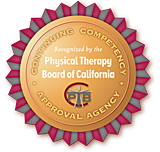
Learning The Method
MNRI® Lifelong Reflex Integration
Course Overview:
MNRI Lifelong Reflex Integration techniques focus on activating and engaging reflexes that are important to everyday function. Unlike primary motor reflex patterns, lifelong reflexes remain visible and present, allowing the body to maneuver and function with little thought to things like balance, grounding, or centering. When lifelong motor reflexes do not emerge or mature as they should, postural changes can result and lead to muscular and structural disorders and misalignment, interruptions in the development of brain function, emotional and behavioral regulation issues, and unproductive learning styles. Depending on the number of lifelong reflexes impacted and their maturation level, a broad spectrum of challenges can appear. Lifelong Reflex program techniques promote the activation and maturation of lifelong reflexes. When lifelong reflexes are appropriately engaged, primary motor reflex patterns are better able to activate, mature, and integrate. In this way, the Lifelong Reflex Program, like all MNRI programs, facilitates the integration process of primary motor reflex patterns.
This course explores:
- The general MNRI Method and the role played by the Lifelong Reflex Integration program
- The progression of lifelong reflexes beginning in utero and continuing throughout the lifespan
- The role lifelong reflexes play in establishing a foundation for motor, communication and cognitive development, and emotional and behavioral regulation
- MNRI techniques to assess, pattern, and integrate lifelong reflexes
- How to create MNRI lifelong reflex integration programs for individual clients
- How to incorporate use of MNRI Lifelong Reflex Integration course content into daily client and home practice
Learner Objectives:
- Explain the Masgutova Neurosensorimotor Reflex Integration® (MNRI) Method.
- Describe how the brain engages in protection versus learning and development.
- Explain maturational role of Lifelong Reflexes within the motor reflex system and the effect of dysfunctional reflex patterns on daily life.
- Describe the maturational progression and importance of each Lifelong Reflex.
- Explain the MNRI assessment techniques to determine the integration state (i.e. integrated, dysfunctional or pathological) of each lifelong reflex.
- Demonstrate through supervised hands-on-application the ability to conduct an MNRI assessment and adequately determine the state of each lifelong reflex
- Demonstrate the MNRI techniques to integrate each lifelong reflex.
- Describe and apply an individual MNRI program for clients with various challenges.
- Explain the impact of reflex integration with client families, specifically possibilities for improvements in motor, communication and cognitive learning abilities and emotional and behavioral regulation.
- Explain and apply strategies to incorporate the use of the MNRI Lifelong course content into daily client and home practice.
Motor Reflexes Addressed in this Course:
- Abdominal Reflex
- Amphibian Reflex
- Balancing reflex
- Centering reflex
- Core Tendon Guard
- Foot Tendon Guard
- Gravity reflex
- Grounding reflex
- Locomotion
- Matured Gait reflex
- Sequential Rotation reflex
- Stability reflex
- Stretching reflex
- Convergence – Divergence
- Head Righting Postural reflex
Course Agenda:
Day 1
Hour 1: Movement as basis of Natural Development
Hours 2-3: Masgutova Method® of Neruosensorimotor Reflex Integration
Hour 4: Reflex as the Neuro-Physiological Basis for Development of Lifelong Reflexes
Lunch 1 hour
Hours 5-6: Body Motor Coordination Systems and Brain Levels
Hours 7-8: MNRI® Reflex Assessment
Day 2
Hour 1: Right/Left Motor Coordination System
Hours 2-3: Gravity, Grounding and Stability
Hour 4: Centering, Balancing and Tendon Guard
Lunch 1 hour
Hours 5-6: Head Righting, Postural and Abdominal Reflexes
Hour 7: Amphibian and Matured Gait
Hour 8: Integration of Reflex patterns within Right-Left Body Sides MCS
Day 3
Hour 1: Lifelong Reflexes and the Integration-Up-Down Motor Coordination System
Hours 2-3: Sequential Side Rotation
Hour 4: Responses of the brain to sensory stimuli
Lunch 1 hour
Hours 5-6: Proprioceptive and motor responses to sensory stimuli
Hour 7: Lifelong Reflexes development
Hour 8: Lifelong Reflexes and the body structure and coordination systems
Day 4
Hours 1-3: Evaluate Lifelong Reflexes
Hour 4: Structural integration of Lifelong Reflexes
Lunch 1 hour
Hour 5-6: Complete individual programs
Hour 7: Lifelong Reflexes and how to modify techniques
Hour 8: Implementation of reflex patterns
Prerequisites: No prerequisites are required; however, Masgutova recommends attending the Dynamic & Postural Reflex Integration course first, whenever possible, to help provide broader context prior to attending other foundation courses.




